| Mon-Fri: | 9:30am - 5:30pm |
|---|---|
| Sat-Sun: | 10:00am - 5:00pm |


| Mon-Fri: | 9:30am - 5:30pm |
|---|---|
| Sat-Sun: | 10:00am - 5:00pm |
From the isolated mountain valleys of the Pyrenees to the majestic Moorish architecture of the south, Spain is historic, atmospheric and bewilderingly diverse. Home to a host of idyllic Mediterranean islands, it’s also a sun-worshiper’s paradise.
One of the most diverse and intriguing countries in Europe, Spain has long been known for its affordable beach holidays. But take a step beyond the coastal resorts and you’ll discover a nation with a rich cultural heritage, great expanses of pristine wilderness and some of the best food on the continent. Whether you’re exploring the Catalan capital of Barcelona or experiencing an authentic flamenco performance in a Malaga taberna, it’s a country that grabs you and never lets go.
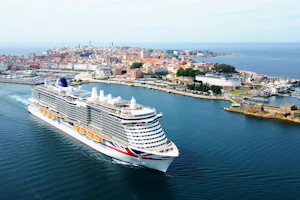
P&O, Arvia
Discover Spain and France aboard P&O's latest ship, the Arvia. Explore six destinations including Barcelona, Cadiz, and Toulon.
P&O, Ventura
Embark on a 14-night inclusive adventure with our unique Canary Islands and Portugal cruise holiday.
P&O, Britannia
Cruise the Mediterranean on P&O’s Britannia ship. Includes visits to Cadiz, Ibiza, Mallorca, and Gibraltar.
P&O, Arvia
Experience the luxury of P&O's Arvia cruise ship on this Mediterranean adventure. Includes Barcelona and La Coruna.
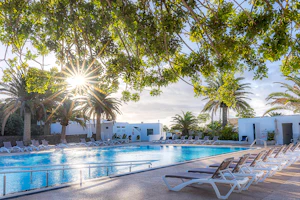
Bid farewell to grey skies and prepare for winter warming sunshine as you discover this beloved island in the Canaries.
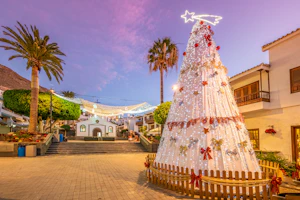
Enjoy 11 days discovering the beautiful volcanic island of Tenerife while celebrating Christmas and New Year.
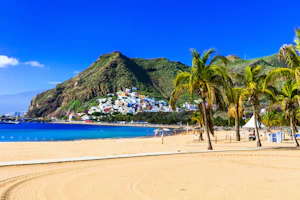
Discover the awe-inspiring volcanic landscapes of Tenerife. This island enjoys year-round sunshine.
P&O, Arvia
Discover Mediterranean gems with P&O's Arvia cruise, visiting La Coruña, Costa del Sol, Toulon, Barcelona, and Cadiz.
P&O, Iona
Cruise the best of the Canaries and Portugal on this 14-night holiday. Includes visits to 4 beautiful islands.
Discover the best of Spain and France aboard P&O's sophisticated Iona ship. See Cherbourg, La Coruna, Vigo and more!

P&O, Arvia
Discover the best of Spain and France aboard P&O's sophisticated Arvia Cruise ship. See Cherbourg, La Coruna, Vigo and more!

Embark on an accessible cruise around Spain, Italy and France onboard Princess's Sky incredible cruise ship.

P&O, Iona
Discover the beauty of Portugal and the Canary Islands sailing aboard the world-class Iona cruise ship.

P&O, Ventura
Embark on a 14-night accessible cruise with Limitless. Explore La Coruña, Lisbon, Canary Islands, and Madeira aboard P&O Ventura.
P&O, Britannia
Sail the Canaries in October sunshine with stops in Madeira, Lisbon & more.
P&O, Ventura
Discover the best of the Canary Islands, cruising to 5 beautiful ports including Lisbon & Tenerife.

P&O, Iona
Set sail on a remarkable 14-night voyage in 2025 aboard the Iona.

P&O, Ventura
Embark on a 12-night Canary Islands and Portugal cruise from Southampton on P&O’s Ventura.
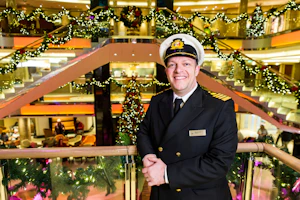
P&O, Iona
For those looking for a little winter sun over the festive period, treat yourself to this 14 night accessible cruise.
At Limitless Travel, we organise disabled access holidays in Spain and around the world. Whether you’re interested in the sun, sea and sand of the Costa del Sol or the bustling streets of the Catalan capital, Barcelona, our disabled holidays in Spain are the perfect way to explore this fascinating country.
With a range of disabled holidays to Spain on offer, including Tenerife, Andalucía and Lanzarote, amongst others, we ensure you're able to enjoy wheelchair accessible travel in Spain by providing the support, care and information you need to travel comfortably.
From finding wheelchair accessible hotels in Spain to vetting attractions to ensure they're disabled friendly, we take care of every aspect of your disabled holiday in Spain. For holidaymakers with questions about travelling to Spain, we’ve answered a few FAQs below.
On our disabled holidays in Spain, we ensure complete accessibility by utilising disabled friendly coaches for airport transfers and excursions. Both wheelchair users and those with mobility impairments can use our coaches’ hydraulic lifts and ramps for easy access.
By vetting all transport partners before we use them, we make sure you enjoy wheelchair accessible travel in Spain, wherever you go.
In fact, every aspect of our wheelchair accessible tours in Spain is vetted to ensure that they meet our high standards. So you don't have to worry about whether or not there will be accessible accommodation or disabled friendly transport in Spain - we've got it sorted.
Our excellent wheelchair accessible hotels in Spain have been hand-picked for their ability to meet the needs of disabled travellers. Whether you're looking for wheelchair friendly hotels in Majorca, accessible accommodation in Malaga or wheelchair accessible hotels in Barcelona, we’ve searched the country for the best hotels and then vetted them to ensure they meet Limitless Travels’ impeccable standards.
Though exact facilities vary from hotel to hotel, the accommodation for our disabled access holidays in Spain typically features wetroom bathrooms, roll-in showers and accessible swimming pools and public spaces.
Coupled with the care and support provided by the Limitless Team, our wheelchair friendly hotels in Spain guarantee a comfortable, worry-free and enjoyable trip.
In short - yes! To make our accessible tours in Spain extra special, our research team have visited each of our destinations to create a fully disabled friendly holiday itinerary and vet accommodation, transport and activities.
We want you to be completely comfortable both in the build-up to your holiday and during your trip. To this end, we provide an in-depth destination guide to every holidaymaker joining us on one of our disabled access holidays in Spain. Contained within is information regarding your itinerary, hotel, excursions and destination, so you know exactly what to expect on any of our accessible tours in Spain.
Just to summarise, here are five reasons we think Limitless disabled holidays in Spain are unmissable.
1. All our Spanish destinations, accommodation, transport and activities are vetted for accessibility
2. You travel with professional carers and if you require a personalised care programme, we'll organise it
3. We travel to some of the most popular holiday destinations in Spain and feature a few hidden gems, too
4. Our disabled holidays in Spain are all about having a good time in a supportive atmosphere
5. Tapas, tapas, tapas. Did we mention the tapas?
With Limitless Travel, it couldn’t be easier to book holidays for disabled adults in Spain. Take a look at the available holiday destinations below and give one of our specialist travel advisors a call to talk to them about the care and assistance you’ll require while away.
They’ll give you details about dates, care packages and specialist mobility equipment available for your disabled access holiday in Spain and answer any questions you may have. If you’re unsure as to where you want to go, give them a call anyway - all of our advisors have excellent knowledge of our tours and will be able to help you to decide which of our disabled access holidays in Spain is right for you.
The Limitless Travel Team will also be on-hand to provide you with post-booking support, so you can relax and start preparing for a perfect European trip! If you have any enquiries relating to Limitless Travel wheelchair friendly holidays in Spain, please don’t hesitate to get in touch with the Limitless Team on 0800 711 7232.